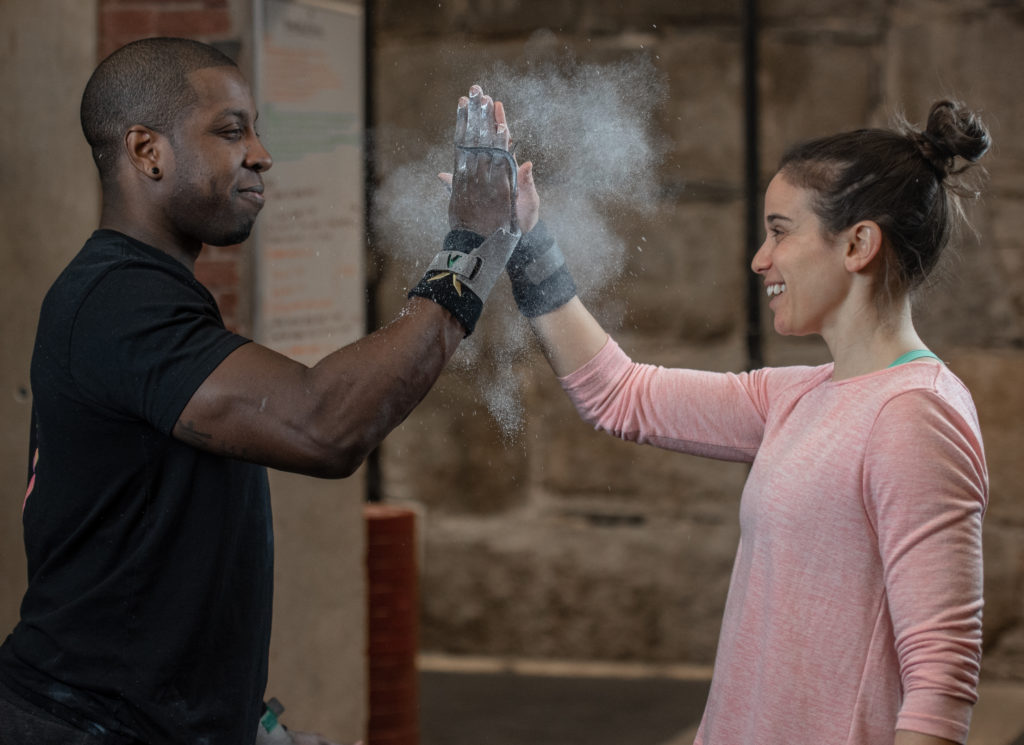
Let’s Talk Chalk
Written by Aggie Stern
Most would agree that chalk helps with grip during a workout. Jumping off the pull-up rig, setting down the barbell, or stepping away from a big set of kettlebell swings often occurs when our grip gives out. Grip strength is something we can improve on with exercises such as farmer’s carries or the static holds we have seen programmed recently. However, once the moisture in the hands builds up, no amount of grip strength can stop the bar from slipping out of our hands when the sweating begins.
Chalk for Gym Bags & Stocking Stuffers!
This makes chalk one of the most helpful tools you can have in your gym bag AND it’s the perfect stocking stuffer! So, what type of chalk is best for you or your favorite athlete? Let us look at some of the pros and cons of the two types of chalk you’ll see in the gym: Block Chalk and Liquid Chalk.
Liquid Chalk
Pros
- Many athletes prefer this because it lasts longer, and reapplication is not usually needed in a workout.
- Less messy than block chalk.
- Easy to carry in a bag or pocket.
- Some find it grippier than block chalk (although others would argue this).
Cons
- More expensive.
- Can be drying or irritating on the skin. The ingredients of liquid chalk usually include magnesium carbonate (the chalk) and isopropyl alcohol both of which are drying. Some also include rosin which is a form of resin (found in pine trees) that those with sensitive skin can find irritating. This is what gives the sticky feeling and tends to keep it on the hands longer.
Block Chalk
Dry chalk is the original chalk for workouts, and has one ingredient: compressed magnesium carbonate. It comes in blocks that can be broken into smaller pieces and stored in a large Ziploc type bag or Tupperware container.
Pros
- It is less expensive than liquid chalk and some will argue that it is superior in helping with grip.
- There is also no drying time involved with dry chalk which makes reapplications easier.
Cons
- It is messy and tends to get everywhere meaning more time spent cleaning up after your workouts (you have probably seen athletes go get the mop bucket).
- The particles do tend to travel in the air more which can be irritating for those with asthma.
How to Make Your Own Liquid Chalk
If you want to spend the time, it is possible to make your own liquid chalk with a block of dry chalk broken down into powder form and 70% Isopropyl (rubbing) alcohol. The ratio is 2:1 chalk to alcohol. 70% is important because the water is what is going to help dissolve the chalk and a higher percentage of alcohol would hinder this. Small batches are recommended because this will dry out very quickly and needs to be stored in an airtight container.
Drop your recommendations on brands of either type of chalk in the comments section!